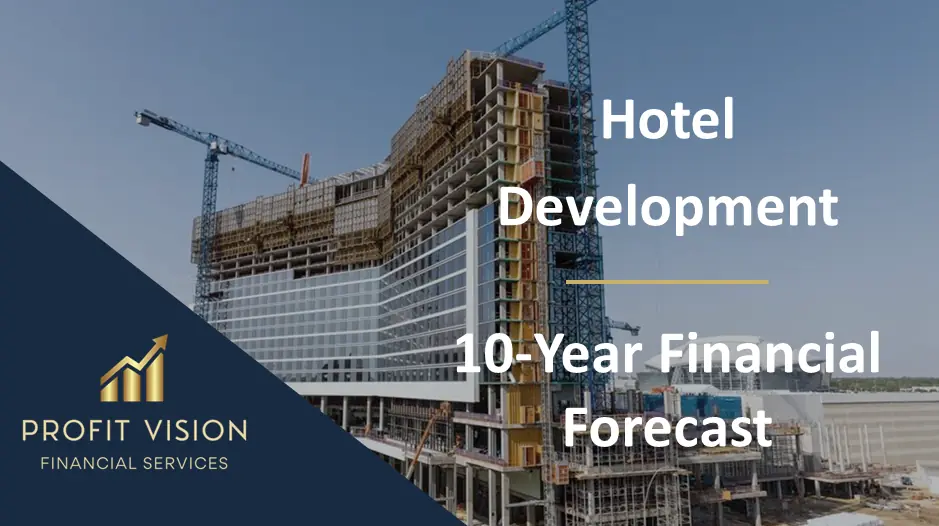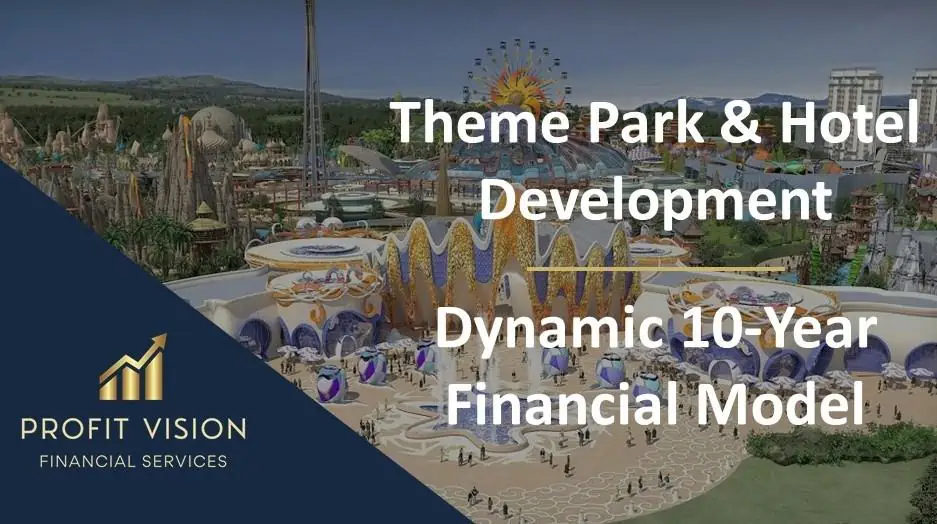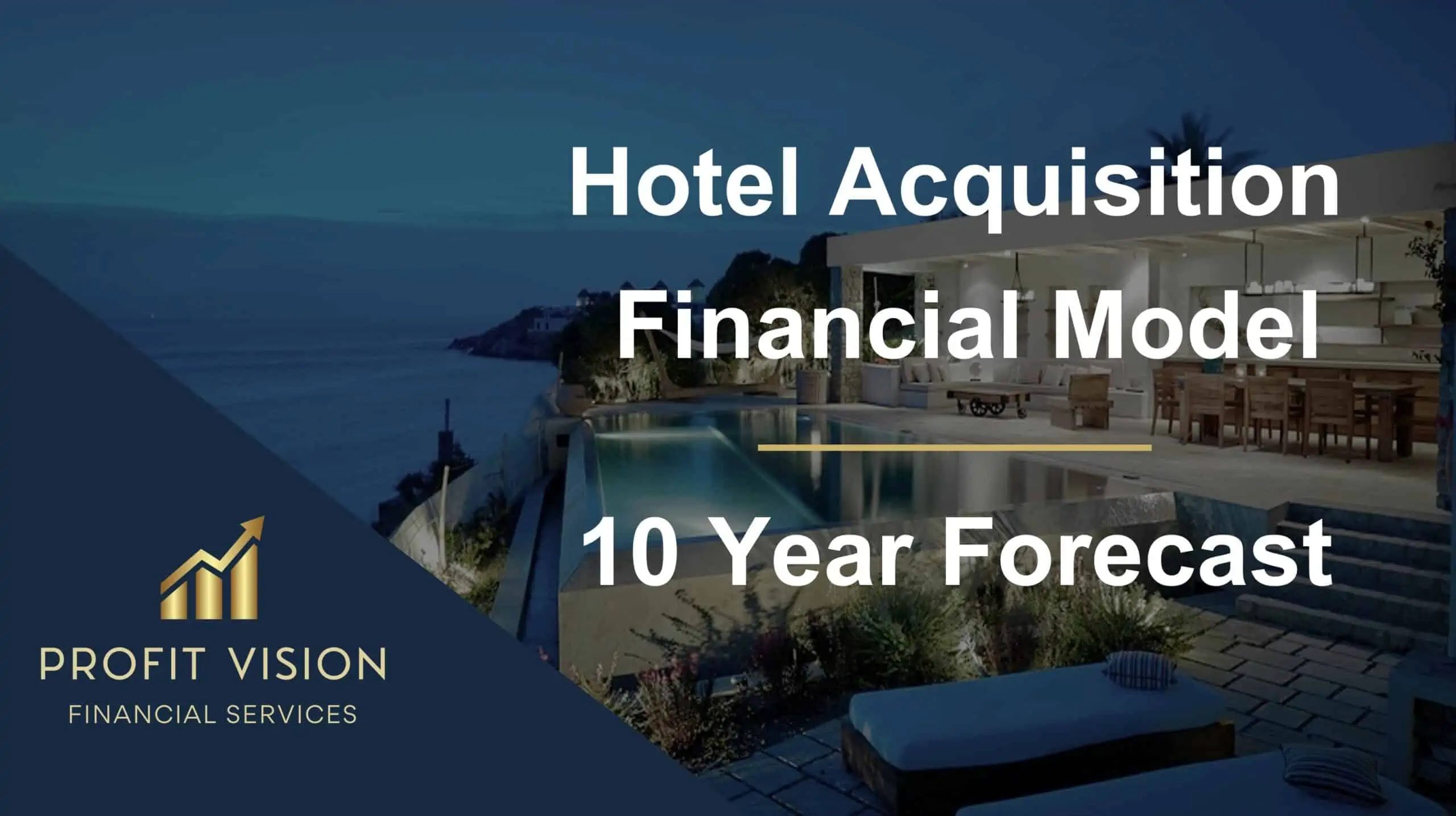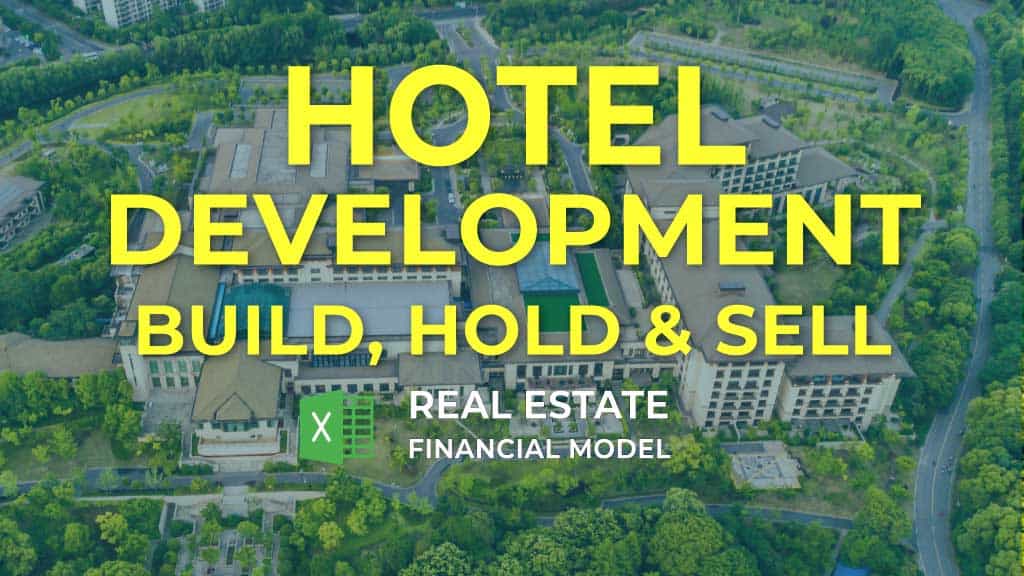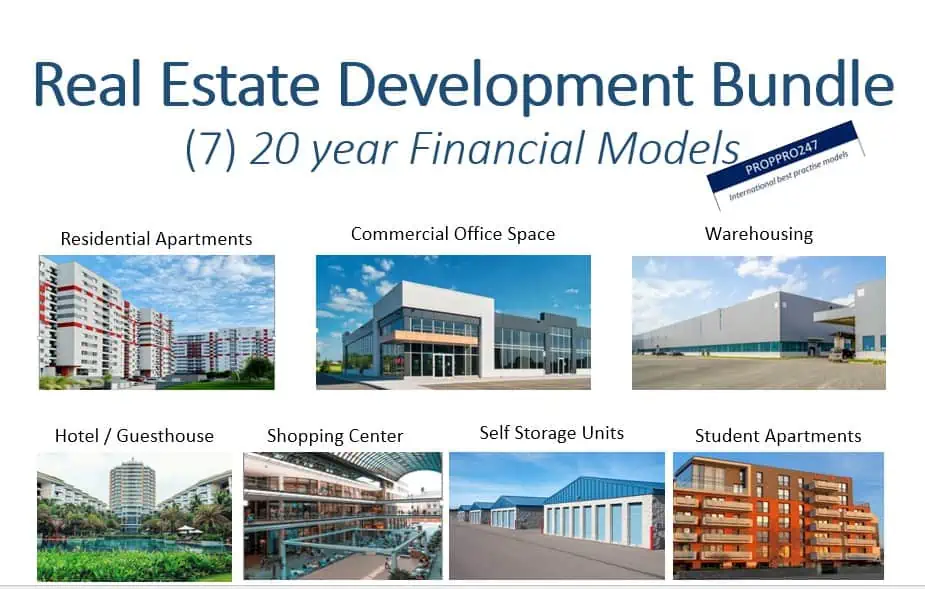Hotel Development Financial Model
A professional model for hotel construction

This is a detailed, well-structured and transparent cash flow model for the development of a hotel. Use this model if you are considering investing in the construction of a new hotel.
The model includes the following investment stages:
1. Acquisition. This can be, e.g., an initial purchase of a land plot or some construction in progress. The model allows you to set the acquisition date, price, and fixed & variable transaction costs.
2. Construction CAPEX. You can set the amount and timing of various renovation CAPEX items.
3. Operation. You can input your average daily rate (ADR) and occupancy assumptions by month to reflect seasonality. You can also model cash flows from other activities such as restaurants and bars, car parking, wellness center, laundry, meetings and events, and transportation services.
4. Sale. You can define the holding period, the cap rate, and transaction costs at exit. You can choose the method to calculate the NOI for the purposes of valuation (12 months forward, 12 months trailing, or 6+6 of each.
5. Distribution of profits between shareholders. The model calculates returns to a preferred partner if there is one in the project. It then uses a 4-hurdle carried interest waterfall to calculate the distributions between General Partner (GP) and Limited Partner (LP).
The model assumes the investment will be financed by equity and loan. The following funding structure is considered:
– Construction loan to finance the initial acquisition and construction. You can set the interest rate, amortization period, interest-only period, arrangement, and early repayment fees. You can also choose the loan-to-value (LTV) ratio for the asset and for the renovation costs.
– Refinancing loan. The model allows setting the date of refinancing and parameters of the new loan (interest rate, amortization period, fees, etc.). You can refinance just the old amount of the loan or take additional funding (as much as refinancing LTV allows) and distribute (cash out) any extra amounts.
– Mezzanine loan. This loan is drawn at acquisition to bridge any potential gaps in funding. Mezzanine loan is repaid at exit.
The model produces the cash flow statements at the asset and investor levels. To illustrate the effect of debt funding, the model shows both unlevered and levered cash flows for the investors. To monitor the leverage, the model calculates the project Debt Service Coverage Ratio (DSCR).
The model also calculates key profitability metrics (IRR, equity multiple, gross return peak equity required amount, and date) for every investor.
Sensitivities. The model includes numerous inputs which you can change to see the effect on profitability and cash flows. There is also a data table that shows the IRR and equity multiple at various exit date and cap rate assumptions.
The model is accompanied by professionally designed magazine-quality charts to illustrate the results of the analysis.
Every investment is unique, and so the model might need to be adjusted to your situation. Contact me if you need help tailoring this model or developing a new one.
Similar Products
Other customers were also interested in...
Hotel Acquisition Financial Model
This is a detailed, well-structured and transparent cash flow model for an acquisition of a hotel. U... Read more
Hotel Development Financial Model (Construction, O...
Financial model presenting a development scenario for a Hotel including construction, operation, and... Read more
Hotel/Guesthouse/Resort Development Model and Valu...
This Hotel / Holiday Resort Development Model will take you through a 20-year period of Three Statem... Read more
Theme Park & Hotel Financial Model (Construct...
Financial model presenting a development scenario for a Theme Park & Hotel project including con... Read more
Hotel Acquisition Financial Model
General Overview Advanced financial model presenting an acquisition scenario for a Hotel. The ma... Read more
Hotel Development REIT Financial Model Excel Templ...
Get the Best Hotel Development REIT Financial Model. Excel Template for your pitch deck to convince ... Read more
Student Hostel Development – Dynamic 10 Year Fin...
A hostel is a lower-priced inn of sorts that offers basic, shared accommodations. Typically, a hoste... Read more
Short Term Rentals (Airbnb) Financial Model –...
A short-term rental is a furnished living space available for short periods of time, from a few days... Read more
Airbnb Financial Model
Air BnB Financial Model Template presents the business case of the purchase of up to 5 properties wi... Read more
Real Estate Development Bundle
This Real Estate Development Bundle is a collection of real estate calculators or tools in MS Excel ... Read more
You must log in to submit a review.























